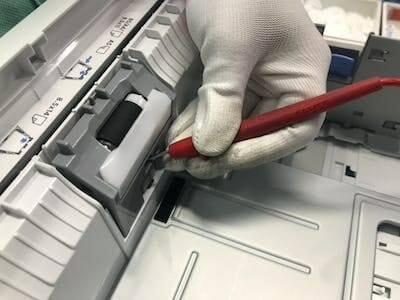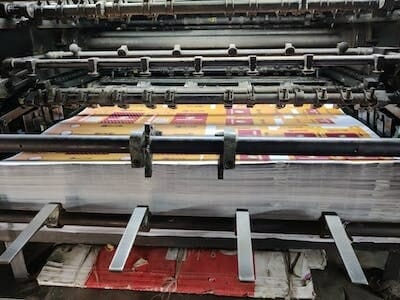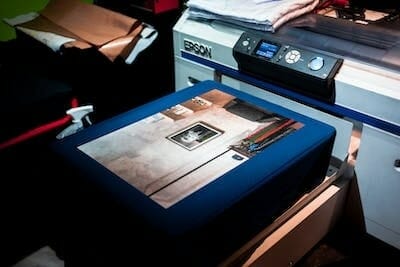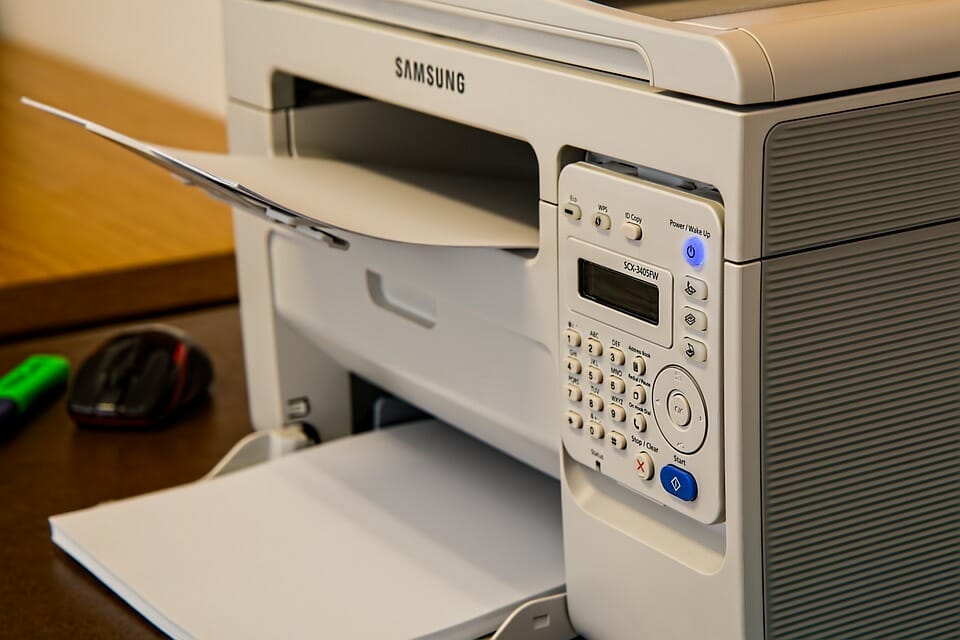Spooling is a process used in computing to temporarily store data in a buffer before it is sent to a device, such as a printer. Understanding spooling is essential for any printer user, as it can help improve the speed and efficiency of the printing process.
This article will explain the concept of spooling, why it is important for printing, and how it can improve the printing process.
Table Of Contents
- 1 Understanding Spooling
- 2 Spooling in Printing Process
- 3 Common Issues with Spooling
- 4 How Long Does Printer Spooling Take
- 5 How Do I Disable Spooling on My HP Printer?
- 6 Should I Spool or Print Directly to the Printer?
- 7 Printer Spooling but Not Printing
- 8 What Does Spooling Mean on a Printer: FAQs
- 9 Conclusion
Key Takeaways
- Spooling is a process used in computing to temporarily store data in a buffer before it is sent to a device, such as a printer.
- Spooling allows for faster printing, cost-effective printing, increased reliability, and improved performance.
- Common issues with spooling include slow printing, printer error messages, printer not responding, and print jobs getting stuck in the spooler.
Understanding Spooling

Overview of Spooling
Spooling allows the computer to process data faster than it would otherwise, as it can access the stored data rather than waiting for it to be input by the user or an external device. This process is used in various applications, such as printing, networking, and operating systems. Spooling can also process data in the background while the user interacts with the computer.
How Spooling Works
Spooling takes data from the user and stores it in a buffer or queue. When the printer is ready to print, the data is sent to the printer in the correct order. This prevents the data from becoming lost or corrupted while in transit. It also allows multiple users to access the same printer without waiting for a user to finish their print job.
Benefits of Spooling in Printing
Spooling is a beneficial process and can offer several benefits to users. Below are some of the most notable benefits of spooling in printing:
- Faster printing: Spooling allows for faster printing because it allows the printer to process multiple jobs simultaneously. This means that the printer can print out documents faster and more efficiently.
- Cost-effective: Spooling allows for cost-effective printing. The process enables multiple jobs to be processed at once, reducing printing costs as fewer resources are needed to complete the job.
- Increased reliability: Spooling ensures that the print job is completed without interruptions or errors. It also makes sure that the print job is printed in the correct order by temporarily storing the print job in the spooler.
- Improved performance: Spooling improves printer performance by allowing the printer to print multiple jobs simultaneously. This reduces the time needed to print documents and increases the printer’s overall performance.
Related: 5 Best All-In-One Printers for Home Use With Cheap Ink
Spooling in Printing Process

Steps Involved in the Printing Process with Spooling
The printing process with spooling involves several steps to ensure that the print job is completed accurately and efficiently.
- Send the print job to the spooler- the print job is converted into a format the printer can understand. This converted print job is then sent to the spooler.
- Prepare the printer for the print job- Ensure that the printer is connected to the network and that the appropriate drivers are installed. The printer will then receive the print job from the spooler.
- Print the job- The printer will begin to print out the document based on the instructions given by the spooler. It will print the copy based on the settings specified in the print job.
- Spool the print job- This step involves sending the print job back to the spooler. The spooler will then store the completed print job in the computer memory until it is ready to be printed again.
- Finish the print job- The printer signals to the spooler that the print job is complete. The spooler will then delete the print job from the computer memory.
These five steps are necessary to complete a printing job with spooling. Each step is essential to ensure that the job is completed correctly and efficiently.
Differences between Spooling and Direct Printing
- Spooling stores the data in a buffer before printing, whereas direct printing sends the data directly to the printer.
- Spooling allows multiple documents to be printed simultaneously, as the data is stored in a queue—direct printing prints each document one at a time.
- Spooling can send documents to multiple printers, while direct printing only sends data to one printer at a time.
Advantages of Spooling Over Direct Printing
Below are the advantages of spooling over direct printing;
- Increased Efficiency
Spooling allows a printer to print faster and more efficiently as it can process multiple print jobs simultaneously. That means that the printer can complete a large number of documents in a shorter period.
- Increased Reliability
Spooling helps to manage any errors that may occur while printing. It allows the printer to pause any problematic documents and then restart the print job from the same point once the error is corrected.
- Cost-Effective
Spooling helps to save on resources like paper, ink, and energy, as it eliminates the need for continuous printing of documents. It also helps save time and money as the user can print multiple documents simultaneously.
- Print Queue
Spooling allows users to manage a print queue on a computer or other device, which means that users can check the status of their print jobs and even cancel them if necessary. This is particularly useful in a busy office environment where multiple people need to print documents.
Related: 5 Best Printers for College Students
Common Issues with Spooling

Spooling takes data from an application and temporarily stores it in the printer’s memory before it is printed. This can cause several common issues, leading to delays or errors in printing.
Overview of Common Spooling Issues
Spooling issues are common problems that occur when printing documents or other files. Various factors that cause spooling issues include:
- Hardware or software issues
- Networking problems
- User errors
Some common spooling issues include:
- Slow printing
- Printer error messages
- Printer not responding
- Print jobs getting stuck in the spooler
- Print jobs being printed out of order or incomplete
- Print jobs not appearing in the print queue or disappearing from the queue before they are printed
How to Fix Spooling Issues
- Check the Printer’s Status: Ensure that the printer is ready before taking further steps. You can check the printer’s control panel for error messages or status updates.
- Check the Printer’s Connection: Ensure the printer is connected to the computer through a USB cable or network.
- Check the Printer Queue: Open the printer queue by going to the start menu and typing “Printers” or “Print.” This will open the printer queue, where you can check if the document you sent to the printer is still in the queue.
- Restart your Printer: Restarting the printer can help resolve some spooling issues. Ensure all documents are removed from the printer queue before restarting the printer.
- Reinstall the Printer: If all the above steps fail, try reinstalling the printer. This can resolve some spooling issues.
- Update your Printer’s Software: Ensure the printer’s software is up to date by visiting the manufacturer’s website and checking for any available updates.
Preventive Measures to Avoid Spooling Issues
The first step is to check the printer’s settings to ensure that the printer is connected to the correct port and is set to spool print jobs. Other preventive measures include:
- Update the Printer’s Drivers
If the printer’s drivers are outdated, it could cause spooling issues. Thus, it is essential to update the printer’s drivers regularly.
- Delete Old Files
Sometimes, spooling issues can be caused by accumulating old files. Thus, deleting old files and clearing the printer’s spool folder regularly is essential.
- Increase the Printer’s Memory
If the printer’s memory is insufficient to handle multiple jobs, it could cause spooling issues. Thus, it is vital to increase the printer’s memory if needed.
- Check the Printer’s Queue
Sometimes, spooling issues can be caused by a backlog of print jobs in the printer’s queue. Thus, it is essential to check the printer’s queue regularly.
Related: Why Does My Printer Say Offline? Detailed Solutions
How Long Does Printer Spooling Take
The amount of time it takes for printer spooling to complete will depend on the print job’s complexity and the printer’s speed. Generally, spooling can take anywhere from a few seconds to several minutes.
How Do I Disable Spooling on My HP Printer?
To stop your HP printer from spooling, you can use the printer settings and disable the spooler in the printer preferences. Alternatively, you can restart the printer and go to the spooler settings in the Windows Control Panel to disable the spooler.
Should I Spool or Print Directly to the Printer?
Spooling is generally recommended for large documents, as it helps prevent potential errors and can reduce the time needed for the printer to process the job. Conversely, if you are printing a smaller document, it is usually more efficient to print it directly to the printer.
Printer Spooling but Not Printing
Printer spooling is when a print job is sent to the printer, but it is only printed once the printer completely receives it. If the printer is spooling but not printing, it could be caused by a faulty connection or a misconfigured printer driver.
Related: What Is the Best Printer With the Cheapest Ink Cartridges?
What Does Spooling Mean on a Printer: FAQs
Q: What Is a Print Spooler, and How Do I Fix It?
A: A print spooler is software that manages the order in which print jobs are sent to a printer. To fix a print spooler, you should try restarting it. Here’s how:
- Go to your computer’s services list
- Find the print spooler
- Click on restart
Q: How Do I Stop My HP Printer From Spooling?
A: To stop your printer from spooling, try restarting the printer and restarting the spooler service on your computer. If that doesn’t work, try reinstalling the printer drivers and software.
Q: Why Is the Print Spooler Taking So Long?
A: The print spooler may take a long time for various reasons, such as:
- A large print job
- Slow printer
- A problem with the printer drivers or spooler settings
It is best to check the printer settings and troubleshoot any potential issues to ensure the spooler runs optimally.
Q: What Is a Print Spooler With Android?
A: The print spooler on Android is a service that stores and organizes print jobs for printing. It works by sending the print job to the printer and removing it from the spooler when it is complete.
Q: How to Restart the Printer Spooler?
A: To restart the printer spooler, open the Services window in Windows and find the Print Spooler service. Right-click the service and select the option to restart it.
Q: Should I Spool or Print Directly to the Printer?
A: It depends on your needs. If you need to print many documents quickly, spooling them to the printer is often more efficient. On the other hand, if you need to print a single document quickly, it is often more efficient to print directly to the printer.
Related: What Is the Size of Printer Paper? Choosing the Perfect Fit for Your Printing Needs
Conclusion
Spooling is a vital process for efficient printing operations. Understanding spooling ensures that printing operations are as efficient as possible. It is essential to take the time to research and understand how spooling works to ensure that printing operations run as smoothly as possible.


